NYSGA Field Trip B1, 2002, to the Eastern and Central Adirondacks
Trip led by McLelland, Spear, and Storm
In this trip we saw metamorphic rocks ranging in grade from amphibolite to pyroxene granulite facies. Rocks included marbles, anorthosites, charnockites, garnet amphibolites, and pyroxene granulites, among others.
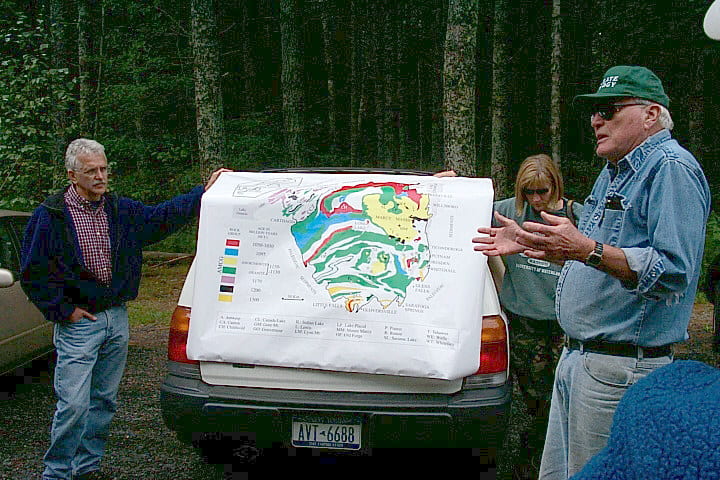
Summary of Adirondack bedrock geology.
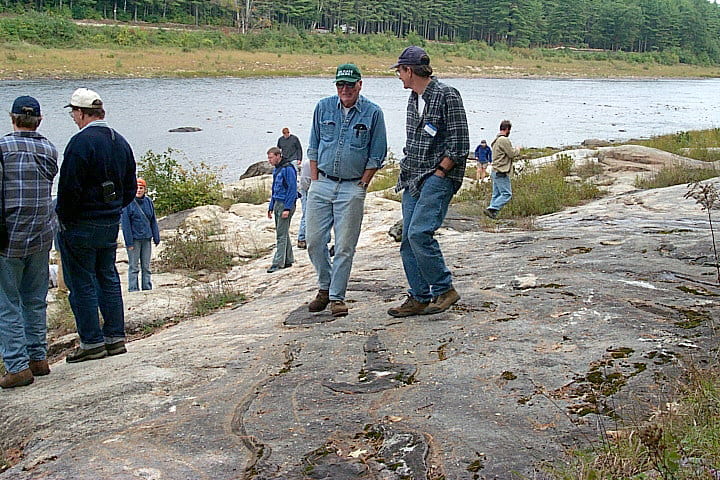
Marble tectonic breccia, on the banks of the Hudson River, Warrensburg. Jim McLelland once said that marbles were the “tectonic grease” during Adirondack deformation, particularly referring to the Ottawan stage. Huge amounts of regional deformation was accommodated by shear through marble. Layers in the marble, dikes, and adjacent units, were all disrupted and incorporated into the marbles. These marble-matrix breccias are very common throughout the Adirondacks.
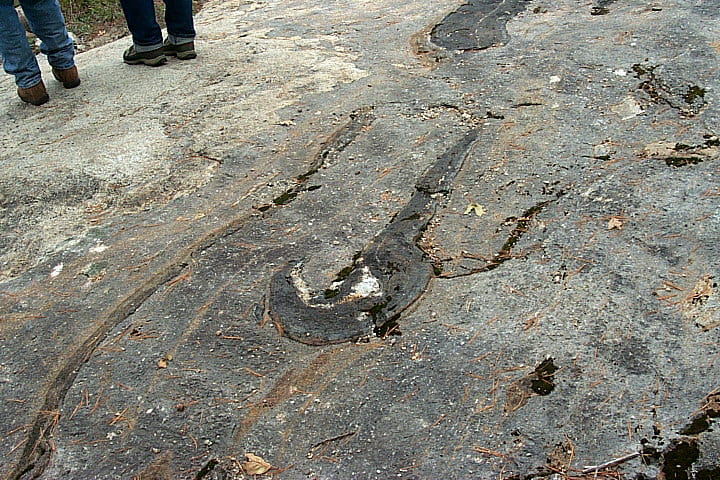
Marble on the banks of the Hudson River, Warrensburg, showing “fish hook” type detached fold hinge of amphibolite, surrounded by marble.
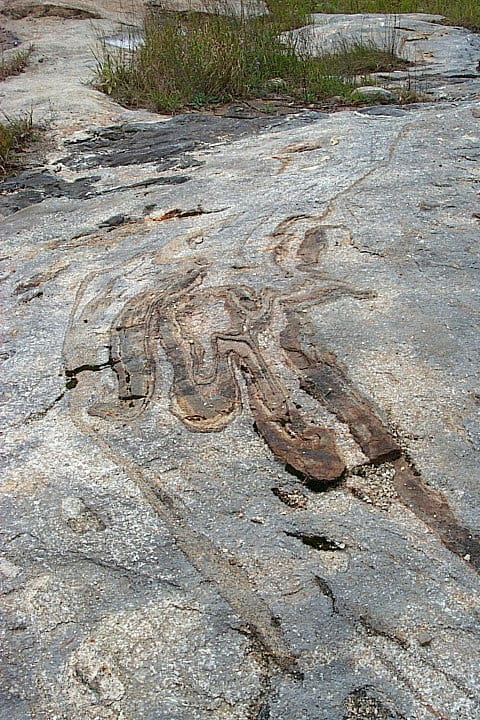
Marble on the banks of the Hudson River, Warrensburg, showing complexly folded amphibolite and calc-silicate rock.
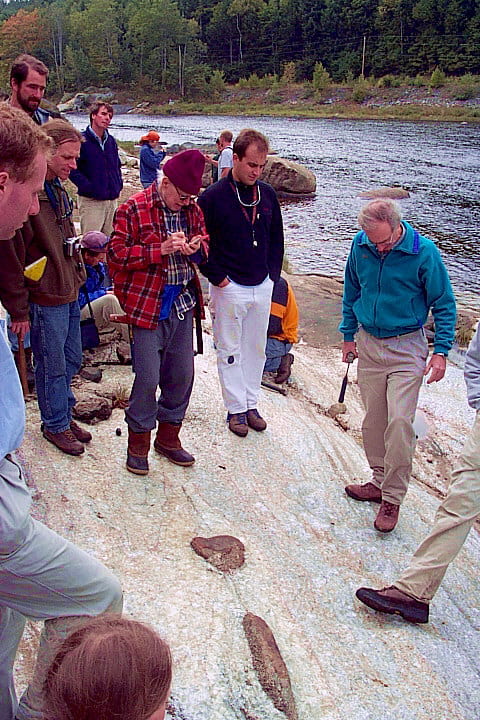
Marble on the banks of the Hudson River, Warrensburg, looking at very coarse marble and xenolithic blocks of charnockite.

Outcrop between Minerva and Newcomb. This is charnockite contains large xenocrysts of gray andesine, like those in nearby anorthosites. These apparently become detached or otherwise mixed from anorthosite into the granitic magma. These xenocrysts become more common toward anorthosite contacts.
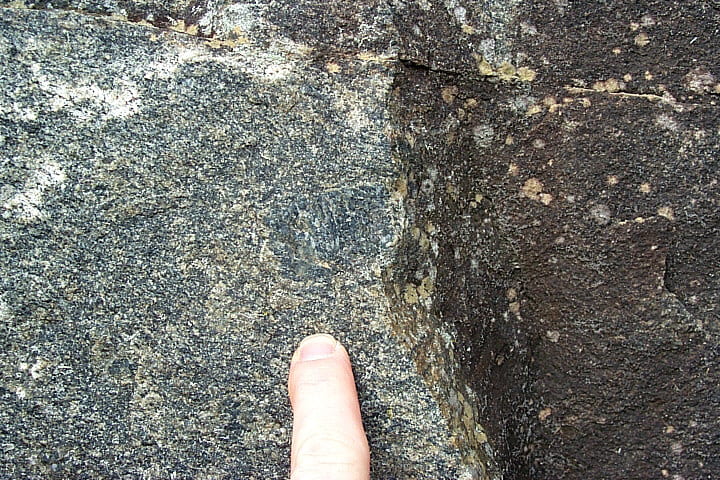
Outcrop between Minerva and Newcomb. Extra large andesine crystal in charnockite .

Outcrop between Minerva and Newcomb. Another extra-large andesine crystal in charnockite .
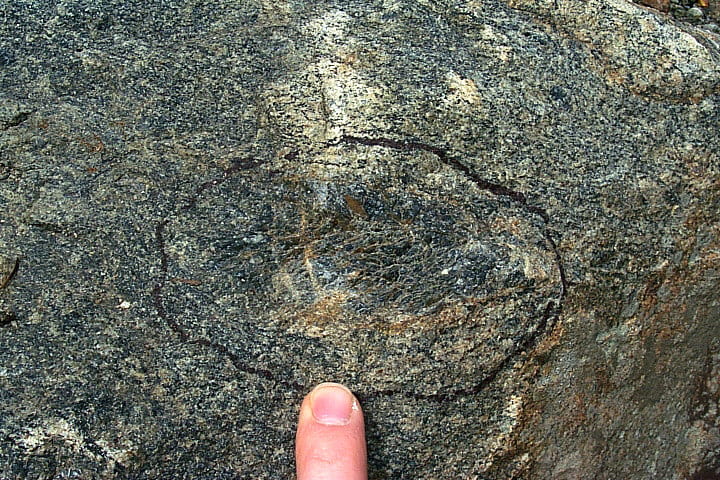
Outcrop between Minerva and Newcomb. The largest andesine crystal in charnockite at this outcrop.
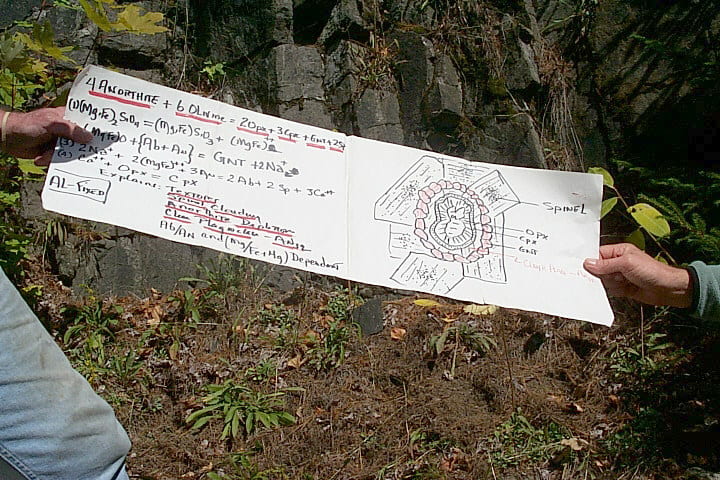
Explanation of the metamorphic mineral zoning found in “coronas” around olivine in corona metagabbro. On the right is the corona layering, the left shows some of the reactions thought to generate the coronas. It basically involved high-temperature, solid-state double-diffusion, with Fe and Mg diffusing out from the olivine, and Si, Ca, Na, and Al diffusing in from the surrounding plagioclase. The corona-forming reactions leaves excess Mg, Fe, and Al, which precipitate as fine-grained green spinel inside plagioclase.

Mt. Marcy type anorthosite at its southern margin. Large andesine crystal at top center is ~20 cm long.
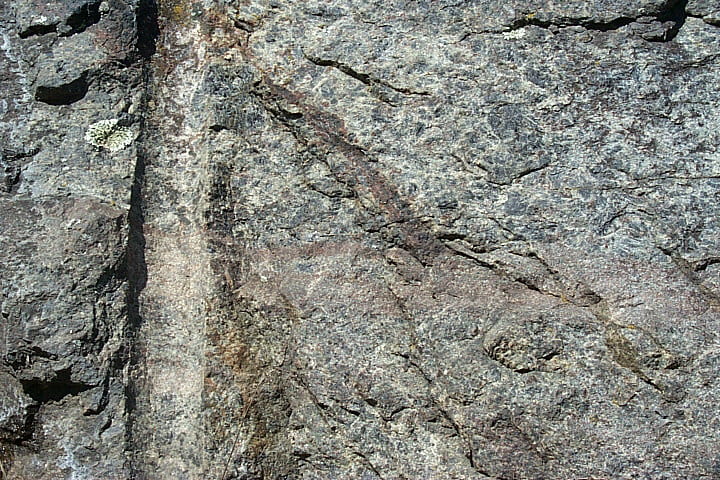
Reddish garnet-rich ferrodiorite dikes crosscutting Mt. Marcy-type anorthosite. The ferrodiorite magma is thought to have been residual liquid from anorthosite crystallization that was mobilized into fractures.
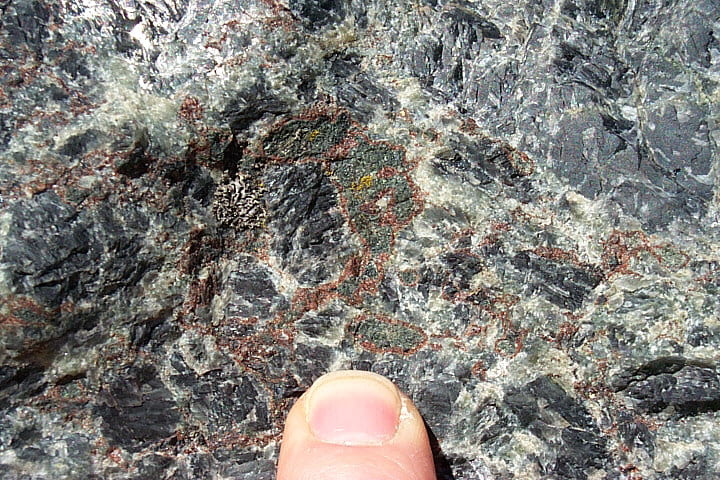
Garnet-rich metamorphic reaction rims between dark-green pyroxene and gray to white plagioclase in Mt. Marcy-type anorthosite.

Fold hinge in quartzite, in a “condolite”-bearing outcrop.

Close-up view of the “condolite” rock itself. Condolite is (l think) a local name for aluminous felsic gneisses containing abundant garnet and sillimanite.

Quartzite, with glacial polish.
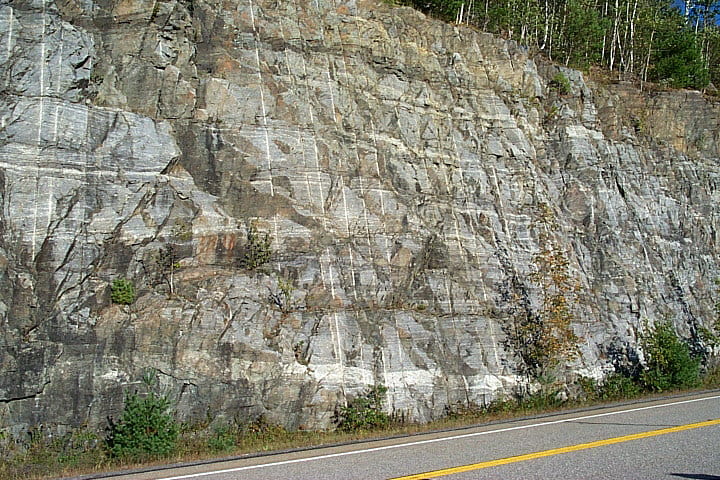
Layered gneisses that have apparently undergone partial melting, with the partial melts having differentiated into the white layers of pegmatite.
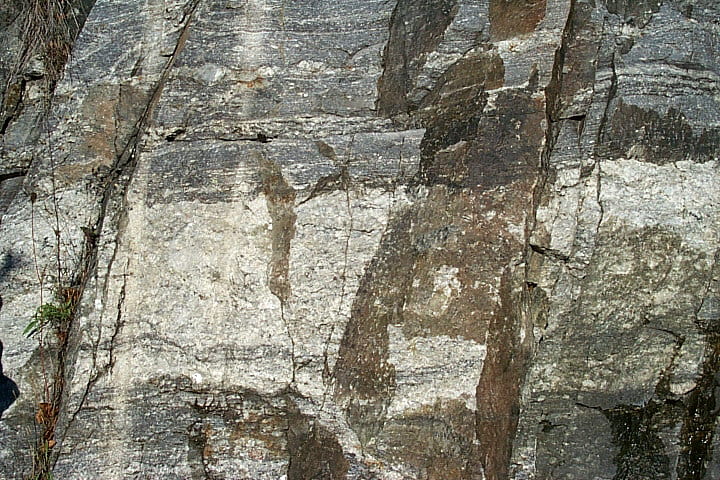
Close-up view of the thick deformed pegmatite at the bottom of the picture immediately above.
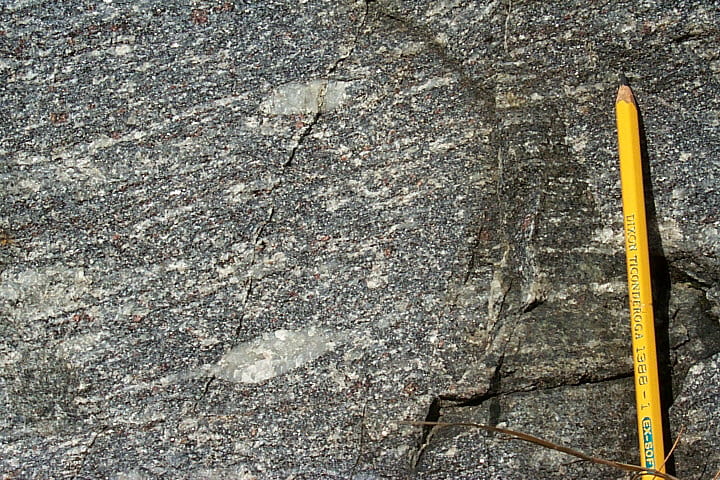
Close-up of relatively homogeneous gneiss between pegmatite layers. The large feldspar augen were probably derived from dismemberment of pegmatites, perhaps an older generation of them.
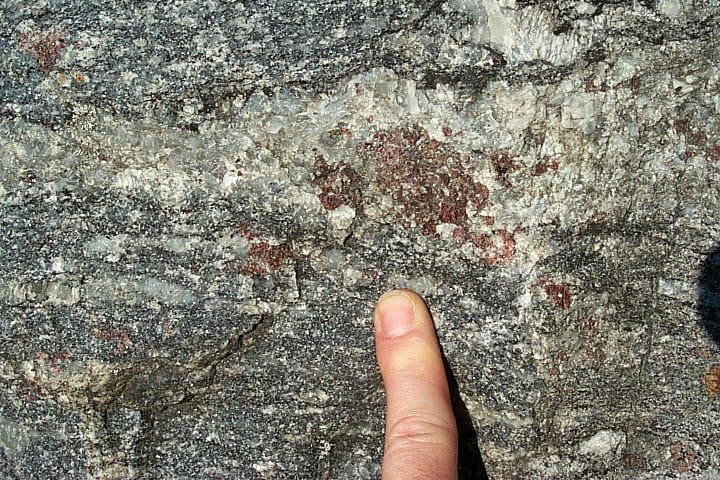
Garnet in a pegmatitic layer in the gneiss.
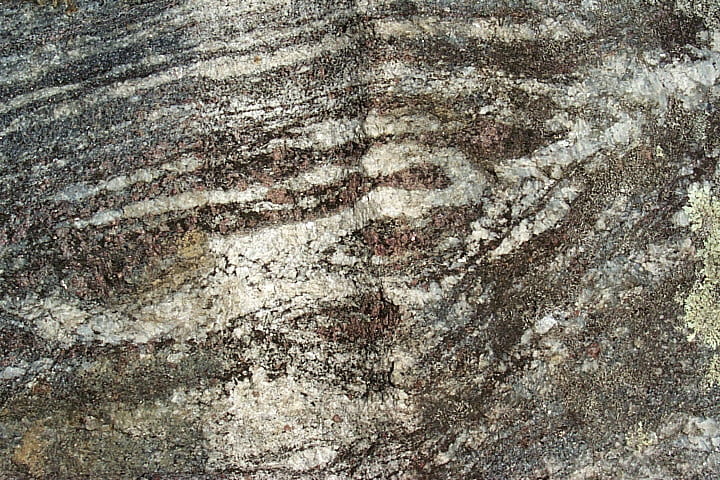
Folded garnet-biotite-rich gneissic layers and pegmatite in the same outcrop.
